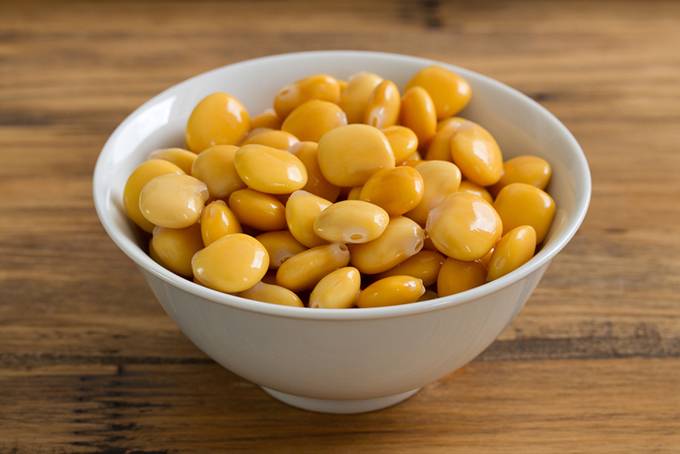El lupine It is a legume whose seed is consumed as appetizer, but whose ornamental plant it is also used as decoration, thanks to its colorful and intense floral beauty. However, the excellent nutrients it provides are not as popular as 'superfood', a quality for which the seed has already been baptized. As in different Spanish regions they call lupins'lupine ', tremosos or' chochos'. Although they have been eaten in a traditional way for thousands of years, it is now when it can be introduced into that privileged group along with Quinoa, Chia or the soybean. Keep discovering more about this product here.
Present in a large number of products
Despite being present in various Spanish geographical areas, it is in Andalusiana where the seed of lupine is consumed more as a small appetizer in brine, next to some reeds. But you can also find it in the 'stalls' of fairs as a precious product for sale. From the purest tradition, lupins became almost the sole sustenance of many families after Civil War. On culture in the field it was and is quite favorable, since it does not need fertilization, in addition to tolerating a variety of soils (sandy, poor, acidic or dry).
Supports the cold and drought, so it is a plant very resistant which is sown between October-February, while it is harvested in the summer months. Many peninsular regions cultivate it, from Estremadura but also Valencia, going through the two Castiles and, of course, Western Andalusia. However, the biggest advantage of lupine it is its versatility to be on any plate. Its flour is used in pizzas, pan and pastries, but also the product enters into the production of hummus, patés or vegetable cheeses.
It even serves as a complement to a salad and as an ingredient in a variety of foods. In general, there are many products made with lupine seedsfrom fermented foods to energy drinks. Sauces, yogurts, pasta, meat substitutes ...

Nutrients and benefits of lupine
With all that involvement in the food world, however, the lupine not as fashionable as others 'superfoods' because it hardly has any publicity. But for their properties and benefits, deserves to be better valued among consumers. Because it is a high source of proteins (40%) quadrupling wheat. Because its content in Dietary fiber it is 34%, increasing satiety. Because it owns low fat levels with less than 6% and abundant unsaturated fatty acids of omega-6 and -9. Also because 24% of their nutritional total are carbohydrates, which favor a lower glycemic index compared to other grains.
As for minerals, the lupine provides iron, calcium, magnesium, phosphorus and zinc. It is a natural vegetable, gluten-free, with vitamins B1, B2, B3, B6, B9 and C. It also has all the essential amino acids, something that benefits the brain and the immune system. Even this seed is made up of some prebiotic compounds, which help maintain proper intestinal health. In addition, contrary to what happens with soybeans, its content in phytoestrogens It is very low.
At the moment, the investigations on the lupine to demonstrate even more about its excellent components for our health. Recently, in experimentation is his worth in the fight against inflammatory diseases, for example. Meanwhile, you can start to introduce the lupins in your balanced diet. It will be a bit unknown, but it is a potential.






